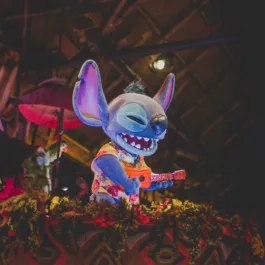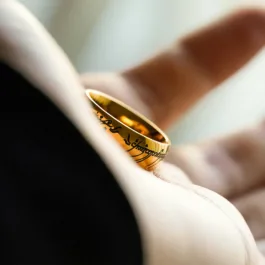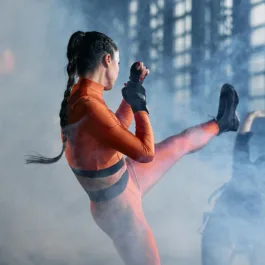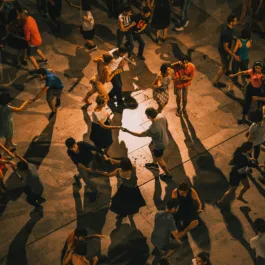Headlining sports like tennis, basketball and gymnastics often steal the spotlight in summer for obvious reasons, but there’s a whole world of fun amateur games that deserve equal attention. Some are rooted in ancient festivities, others are modern cultural treasures – but regardless of whether you’re a sports fan or a history buff, these summer games may just inspire you to start a new league of your own.
Picigin in Croatia
Visit the sandy beach of Bačvice in Split, Croatia, and you’ll likely see locals enjoying picigin, a game created in 1908 by a group of students who were struggling to play water polo in the shallow tide. Instead, they invented a new game in which five players stand in a circle and keep a peeled tennis ball from touching the water by batting it with their hands. Two players act as anchors (not moving from their places), while the other three are runners. While there are no strict rules – other than to have fun – the game is now considered an immaterial cultural good of Croatia; there’s even a long-standing tradition of playing a match on New Year’s Day, regardless of the chilly temperatures.
Pétanque in Southern France
Similar to other boules sports like bocce and lawn bowling, which involve tossing balls towards a target ball, pétanque is a summertime classic often played in the public parks of southern France. The current form of the game was invented in Provence in the early 1900s, and it has since spread rapidly to the rest of Europe and even Asia. In pétanque, two teams consisting of up to three players must throw a total of six balls towards the cochonnet (the wooden target ball) to compete for points based on proximity. But don’t be fooled by the sport’s popularity among the elderly – since one of the goals is to also knock your opponents’ boules away from the target ball, matches have been known to get heated.
Beikou in Mongolia
Beikou, a ball-and-stick sport similar to field hockey, has been played for over 1,000 years by the Daur people of Mongolia. Two teams attempt to pass a ball made of wood, root or cattle hair over the opposition’s back boundary to score points. If played at night, a ball made of dried mushrooms is filled with pine oil and lit on fire for better visibility. Games are often organised by tribes in villages or played recreationally during gatherings and festivals. The rules are flexible, but in general, players cannot steal or strike from the left, nor hit or trip other players, and only the goalkeeper can catch the ball with their hands or feet.
Peteca in Brazil
Rooted in indigenous Brazilian traditions, peteca is played by hitting a shuttlecock-like object with your hand over a high net, causing it to land within the bounds of your opponent’s court. Early forms of the game were played casually during celebrations with homemade objects such as stones wrapped in leaves and tied to an ear of corn. It wasn’t until 1973, when the Peteca Federation of Minas Gerais (FEMP) was founded, that official rules were established. Today, matches are played to the best of three games, in singles or doubles. The first player or team to score 12 points, or the most points within a maximum of 20 minutes, wins.
Ultimate in the United States
Born out of the American counterculture movement of the late 1960s, ultimate (originally known as ‘ultimate Frisbee’) is a low- or non-contact team sport in which two teams of seven players pass a Frisbee and defend opposite ends of a field; points are scored when a player catches the flying disc in the opposing end zone. One oft-cited highlight of the game is that it empowers players to self-officiate rather than relying on referees. Even at the league level, players call their own fouls, which fosters a spirit of sportsmanship. Today, millions of people play at both recreational and professional levels – an impressive feat for a sport that was invented by students at a high school in New Jersey.
Tambeach in Southern Italy
Originating from tamburello, a court game invented in the northern provinces of Italy in the 16th century, tambeach is Sicily’s answer to beach volleyball. But instead of using their hands, players hit the ball with a tambourine-shaped racket. With a similar scoring system to tennis – points are scored when the ball lands on the opponent’s side of the net – it’s easy enough for anyone to pick up. For that reason, sandy courts have continued to pop up along Italy’s southern coast ever since the game was created over 30 years ago.
Abula in Nigeria
Lacrosse meets volleyball in abula, a Nigerian ball game where eight players (four per team) use rectangular wooden bats to hit a ball over a net. Inspired by the principles of a balanced diet, the game was created at a high school in the 1980s to help students meet all their fitness requirements (running, squatting, gripping, jumping, etc.) in one activity. Hence why it was named after abula, a traditional Nigerian dish that combines protein, carbohydrates, and fat – the epitome of a complete meal.
Oină in Romania
Although it’s virtually unknown internationally, Romania’s national sport oină is considered by some to be the ‘godfather of baseball’, brought to the US by Transylvanian immigrants in the 19th century. While its origins are mysterious, early records of the sport date back to the 14th century, where people in the countryside would play matches recreationally. The game is very similar to baseball or cricket, with two teams playing on a field with wooden bats, but unlike baseball, the pitcher and batter are members of the same team, and the ball is tossed gently to ensure it can be hit toward the adversary field.
Gilli Danda in India
Gilli danda is an ancient Indian sport that’s still as popular today as it was 2,500 years ago. Believed to be the origin of cricket, the game is played with two sticks: a large bat called a danda is used to hit a smaller one, the gilli, which is tossed into the air. Once hit, the player must run and touch a set point outside of the circle before the gilli is retrieved by a member of the opposing team. Though the sport is most commonly played by young people in rural areas across South Asia, it has also made its way to Turkey, Poland, South Africa, Italy and even some Caribbean islands like Cuba.
Sepak Takraw in Thailand
When the clock strikes 17:00, Thailand’s public parks are abuzz with lively games of sepak takraw (known locally as ‘takraw’), a team sport that combines volleyball, football, kung fu and gymnastics. While the rules are similar to volleyball, two teams of three players must use their feet, knees, head, shoulders and elbows – instead of their hands – to keep the ball from touching the ground. The exact origin of takraw is undetermined, but there’s evidence it’s been played in Southeast Asia since the 15th century, with some temples even boasting ancient murals depicting Hindu gods playing matches.
Tejo in Colombia
When gunpowder and beer combine, rarely does anything good come of it – but tejo is the exception. This explosive game involves throwing a heavy steel disk, called a tejo, at a clay-covered board. The goal is to land the tejo in the middle of the board, and to gain extra points by hitting one of the four mecha – little pouches filled with gunpowder that explode on impact. Thought to have been invented by the aboriginal people in the region around Turmequé, tejo was designated as the official sport of Colombia in the year 2000. You’re most likely to find tejo players enjoying a game outdoors or in a bar, usually with a cold beer in hand.














Sorry, the comment form is closed at this time.